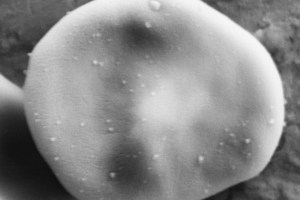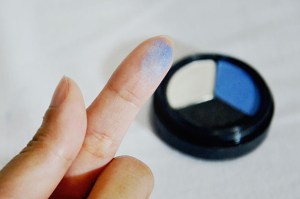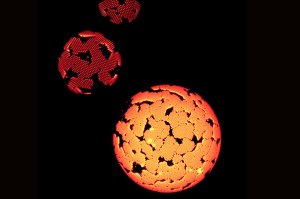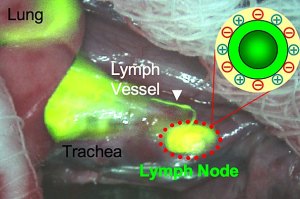Tag: Nanoparticles
-
Science & Tech
An ionic forcefield for nanoparticles
For the first time in mice, researchers have coated nanoparticles with an ionic liquid that allows the nanoparticles to survive the immune system and deliver drugs to their targeted spot.

-
Health
At Harvard Chan School, nano safety is no small concern
Philip Demokritou, director of the Harvard T.H. Chan School of Public Health’s Center for Nanotechnology and Nanotoxicology, sat down with the Gazette to talk about the aims of the center, its recent work on novel nanoparticles, and the potential benefits of a safer-by-design approach.

-
Health
Microscopic particles carry big concerns
With a growing concern about nanoparticle use in everyday objects, scientists at the Harvard School of Public Health have discovered a fast, simple, and inexpensive method to measure the effective density of engineered nanoparticles, making it possible to accurately determine the amount that comes into contact with cells and tissue.

-
Science & Tech
Curves alter crystallization, study finds
A new study has uncovered a previously unseen phenomenon — that curved surfaces can dramatically alter the shape of crystals as they form.

-
Science & Tech
A lab focused on healing
Robert Langer of MIT shared his hopes for bioengineering in a talk at Radcliffe.

-
Science & Tech
Nanoparticles shine with customizable color
Engineers at Harvard have demonstrated a new kind of tunable color filter that uses optical nanoantennas to obtain precise control of color output. The advance has the potential for application in televisions and biological imaging, and could even be used to create invisible security tags to mark currency.

-
Health
Tracking nanoparticles
Using a real-time imaging system, scientists have tracked a group of near-infrared fluorescent nanoparticles from the airspaces of the lungs into the body and out again, providing a description of the characteristics and behavior of the particles that could be used in developing therapeutic agents to treat pulmonary disease.



